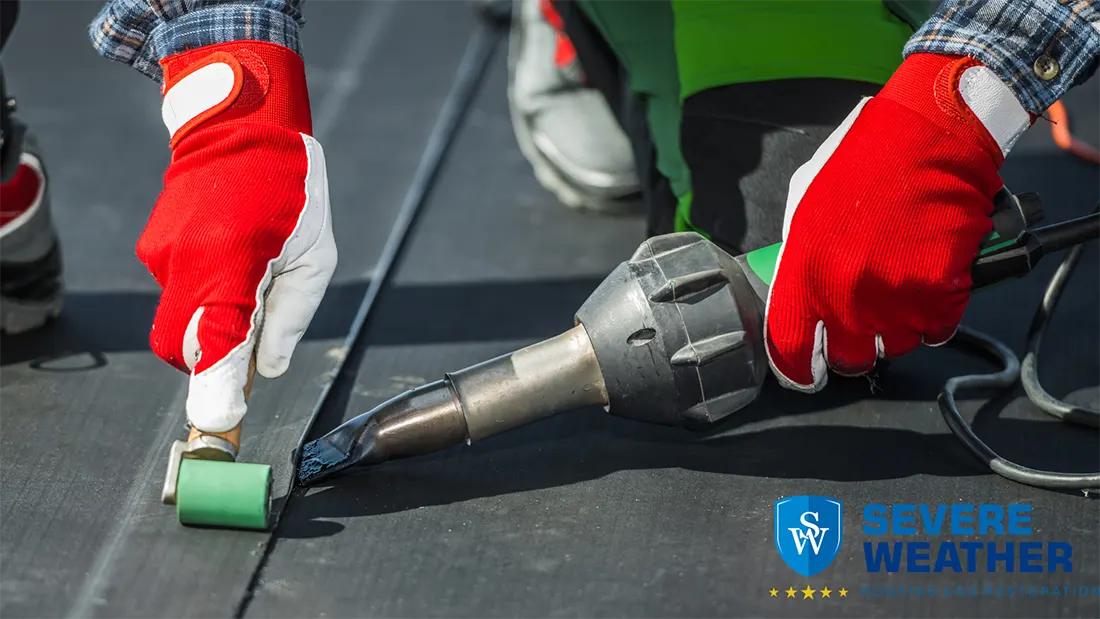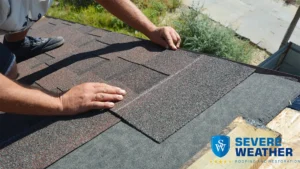
So, you’re dealing with an aging low-sloped roof that will need to be replaced sooner rather than later — or you’re constructing a new building? The unique characteristics of flat roofs call for specialized roofing materials.
As you dive into your options, you may find yourself dazzled and confused. However, one type of roofing that should definitely be on your radar is EPDM roofing. This single-ply membrane roofing system is currently the option of choice for around 20 percent of all flat roofs in the United States.
In this guide, we’ll take a look at (almost) everything property owners should know about EDPM roofing, whether for new constructions or flat roof replacements.
What IS EPDM Roofing?
Without getting too technical, EPDM stands for Ethylene Propylene Diene Monomer — a bit of a mouthful, we know. These roofing systems, which ship in massive rolls, consist of four distinct layers that are built to withstand some of the most severe weather conditions.
These membranes are designed to overlap during the installation process, providing a beautifully waterproof roofing system that’s ready for anything and can last as long as 50+ years with the right care and maintenance.
What Is the Color of EPDM Roofing?
The days when EPDM roofing was only available in black rolls are over. EPDM roofing materials are now on the market in white, reflective rolls known as “cool roofing,” too. This gives property owners the option of choosing the most suitable roofing solution for their circumstances.
While black EPDM roofing absorbs heat, which can help snow melt more easily, white roofing materials bounce heat off your building, potentially reducing your energy bills. It’s exciting to have the choice, and a variety of factors, including the aesthetic that best fits your building, come into play when deciding.
Is EPDM Roofing Easy to Maintain?
Like any other roofing system, EPDM requires periodic inspections and maintenance. However, the material was first introduced in the 1950s, and many EPDM roofs installed decades ago are still fully functional. In the event that the roof membrane is punctured, experienced roofing contractors can install patches to protect the roof’s structural integrity. EPDM roofing is also available with several different levels of thickness, giving property owners more control over the strength and weather resistance of their chosen roofing system.
When Is EPDM Roofing the Right Choice?
If you’re at all familiar with different roofing systems, you may think EPDM roofing is only suitable for large commercial buildings with low-sloped roofs.
You’d partially be right. EPDM roofing, also called rubber roofing, is often an ideal solution for warehouses, schools, manufacturing facilities, hospitals, and similar commercial buildings. Because of the way EPDM roofing is installed, roofers can make quick work of the process, even on a massive scale — resulting in flexible, durable, and low-maintenance roofing that will last for decades.
However, EPDM has more residential applications than you might be aware of. Rubber roofing is not just an excellent option for modern homes with flat roofs, but it’s also often ideal for garages, garden sheds, patio covers, dormers, and even mobile homes.
Exploring EPDM Roofing Options?
You’re in luck; the Severe Weather Roofing & Restoration team is just a click and a call away.
With free consultations on offer, we’ll help you determine which kind of EPDM roofing in Fort Collins is most suitable for your building, and when you’re ready, our trained roofers stand ready to install your brand-new roof in no time.



